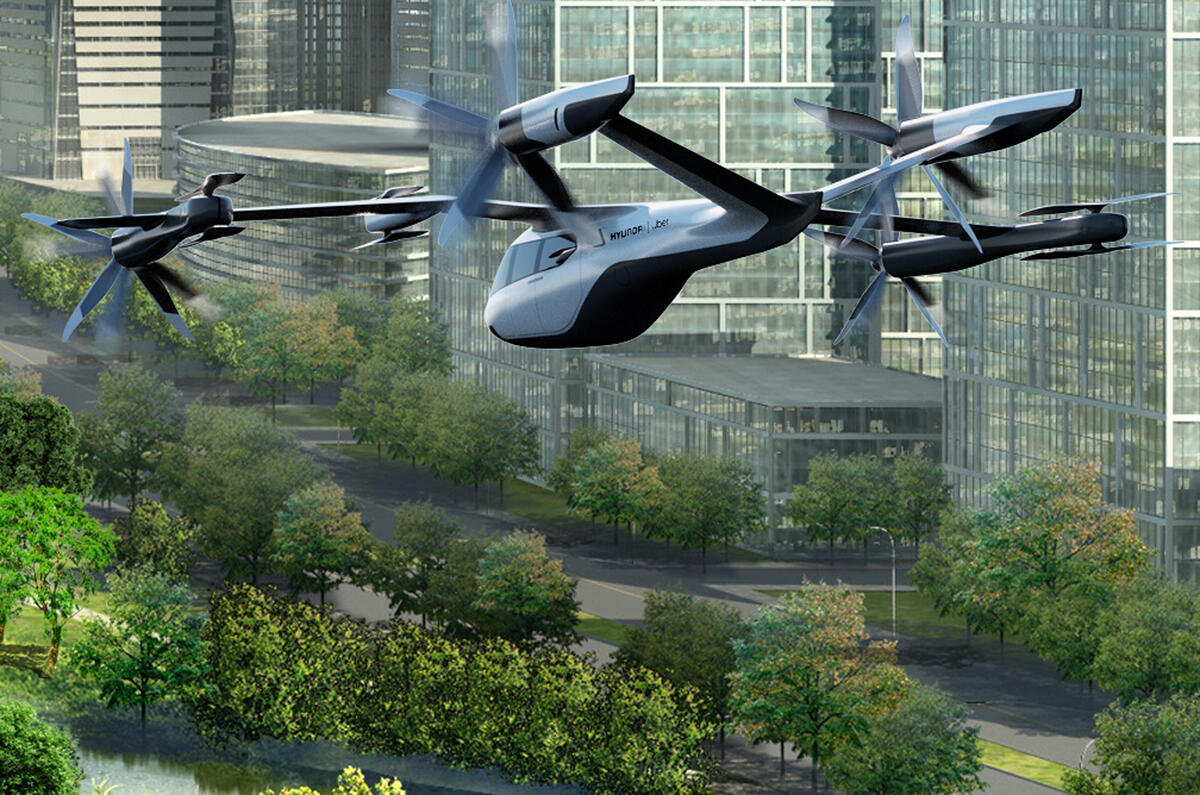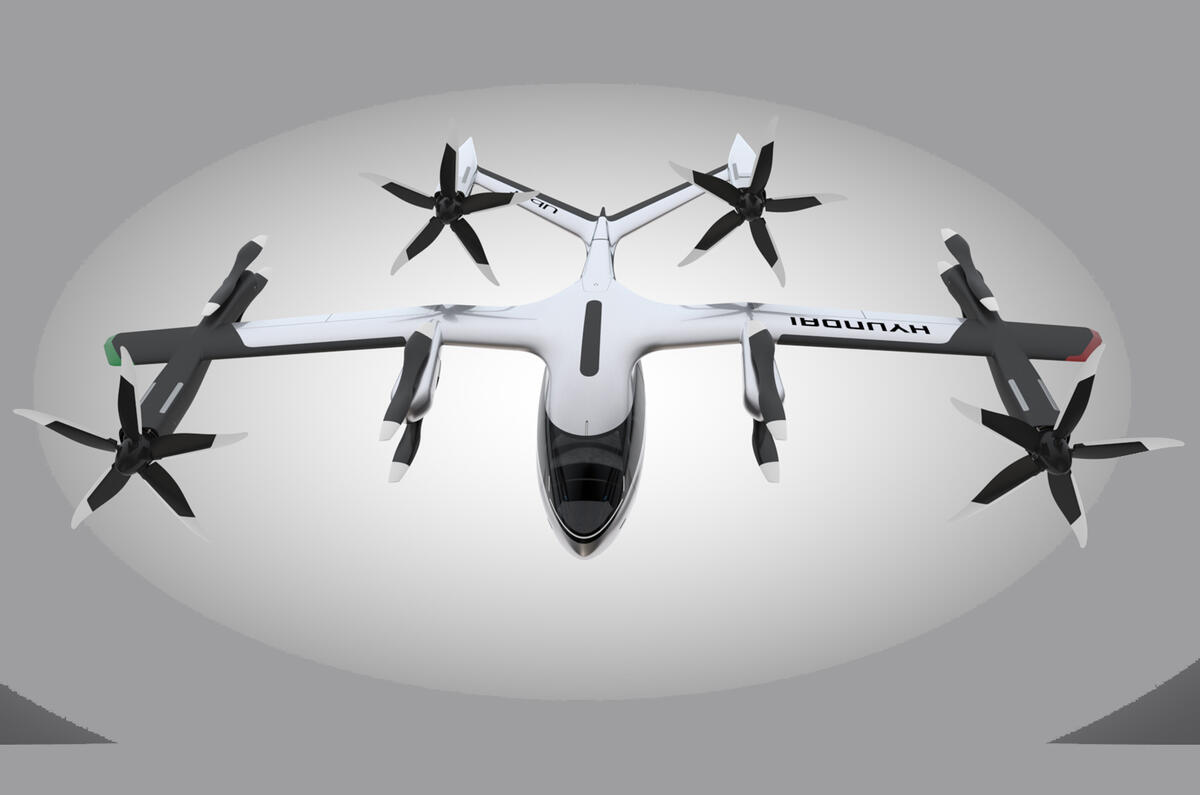Korean car firm Hyundai has teamed up with ride sharing service Uber to develop a Personal Air Vehicle (PAV) concept that could be used as an electric flying taxi in the future.
The S-A1 concept, unveiled at CES in Las Vegas, can carry up to four passengers, is capable of vertical take-off and landing and has a cruising speed of 180mph at an altitude of 1000-2000 feet above ground. Hyundai said the machines will initially be piloted but are capable of becoming fully autonomous eventually.
The machine will be developed and produced by Hyundai, with Uber’s nascent air taxi division providing “airspace support services”, links to ground-based transport options and customer interfaces. Hyundai is the first firm to join the Uber Elevate initiative to develop mass-scale private air transport.
While a pure design concept at this stage, the S-A1 is intended to be capable of trips of up to 60 miles and is capable of being recharged in five to seven minutes at peak times. It will be propelled by multiple small propellers positioned around the frame; Hyundai says this layout both reduces noise compared to a large helicopter rotor and aids safety by minimising the impact of any single point of failure.

Hyundai presented the S-A1 at CES as part of a wider "vision for urban mobility", showcasing potential transport solutions for cities in the future.
The concept includes a Purpose Built Vehicle (PBV), an electric autonomous shuttle-style vehicle that Hyundai says has been inspired by San Francisco cable cars.
The PBV, which can be between four and six metres long, is conceived with a separate chassis and upper bodies, allowing the interior to be customised for various purposes.





















Join the debate
Add your comment
That time already?
No pun intended but, isn't a flying car dead in the air?